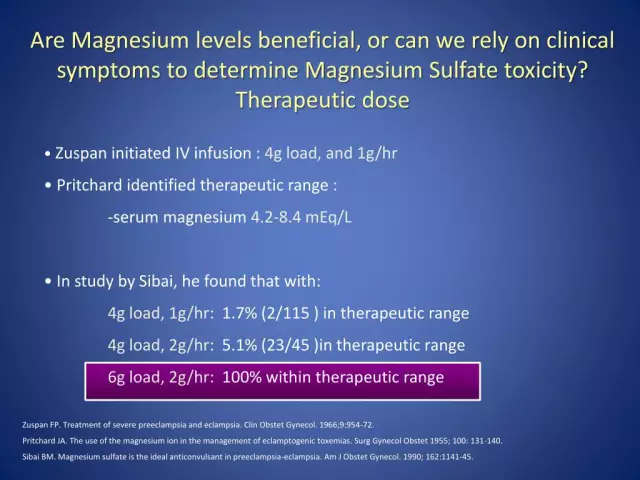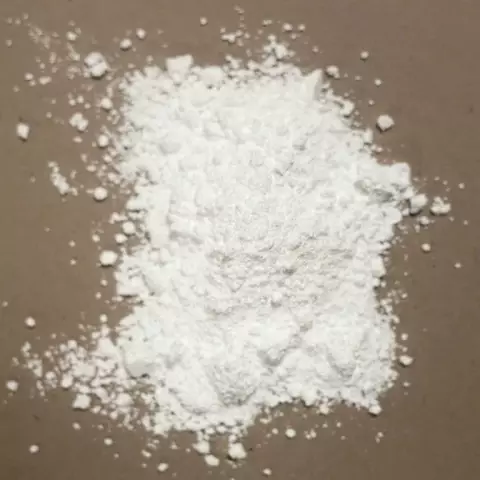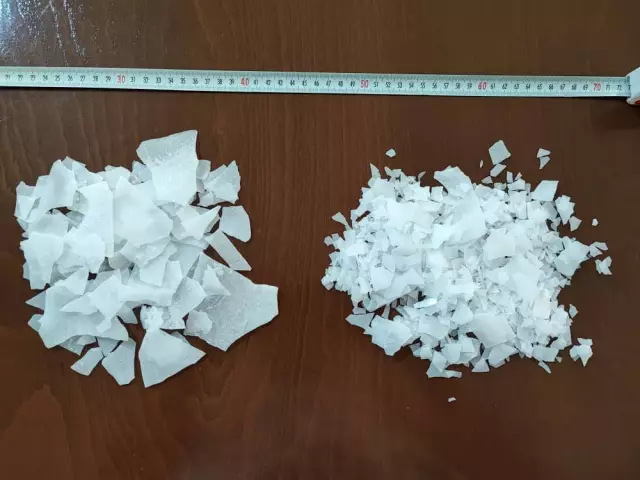- Author Rachel Wainwright [email protected].
- Public 2023-12-15 07:39.
- Last modified 2025-11-02 20:14.
Magnesium oxide
Magnesium oxide (MgO) is a white, hygroscopic solid mineral that occurs naturally as periclase and is a source of magnesium.

Magnesium oxide can be obtained by firing magnesite and dolomite minerals.
Under laboratory conditions, magnesium oxide is obtained by treating magnesium carbonate with magnesium chloride with lime and subsequent heat treatment.
Magnesium oxide properties
Magnesium oxide is an odorless white powder, soluble in acid and ammonia and insoluble in alcohol.
The molecular formula of magnesium oxide is MgO, molar mass - 40.3044 g / mol, density - 3.58 g / cm³, melting point - 2852 ° C, 3125 K, 5166 ° F, boiling point - 3600 ° C, 3873 K, 6512 ° F, water solubility 0.0086 g / 100 ml (30 ° C).
Magnesium oxide applications
In traditional medicine, magnesium oxide is used as a mineral supplement to prevent and treat magnesium deficiency in the blood. Magnesium is a very important component for the normal functioning of cells, nerves, muscles, bones and heart.
Generally, a well-balanced diet provides normal blood magnesium levels. However, taking drugs such as furosemide and hydrochlorothiazide, gastrointestinal diseases, poor diet, alcoholism and diabetes mellitus lead to the development of magnesium deficiency in the body.
The antacid properties of magnesium oxide help with indigestion, gastric acidity and heartburn by neutralizing stomach acidity. Magnesium oxide is also used as a laxative in the treatment of stomach ulcers, duodenal ulcers and calcium oxalate stones in the kidneys.
Magnesium oxide is a part of medicines and food supplements, the action of which is aimed at replenishing the magnesium deficiency in the body. Magnesium oxide medications are taken orally, preferably with meals, to help prevent indigestion and diarrhea. It is necessary to take the medications regularly at the same time for maximum benefit. The dosage depends on the medical condition and response to treatment.
An excess of magnesium oxide in the blood can lead to serious side effects. Before taking supplements that contain magnesium oxide, a doctor's advice is needed, as they may contain inactive ingredients that cause allergic reactions.
As an industrial component, magnesium oxide is used in the manufacture of paper, magnesium salts (Epsom salts), acetates, chlorides and as a component in some types of cement.
In the fiberglass industry, magnesium oxide is used in the processing of steel and nickel.
Magnesium oxide is used in industrial cable insulators, as the main refractory material for crucibles and as a main component in the production of refractory building materials. It is widely used in heating systems as a component of tubular heating elements.
Pressed magnesium oxide crystals are used in the production of optical materials. They are transparent from 0.3 to 7 µm and have a good refractive index of 1.72 at 1 µm as well as low cost.
Magnesium oxide is used in waste disposal plants as a substance capable of controlling the solubility of radionuclides.
Magnesium oxide is also used as a protective coating for plasma displays, and athletes use magnesium oxide powder as a white dressing for hands, thanks to which they do not slip on sports equipment.
In industry, magnesium oxide is used for the production of rubber, synthetic rubbers and refining petroleum products, and in the electronics industry it is used as an abrasive for cleaning surfaces.
In the food industry, magnesium oxide is known as food additive E530, a water-insoluble emulsifier used in the production of:
- Powdered milk;
- Dry cream;
- Chocolate;
- Cocoa;
- Edible oils.
Contraindications and harm of magnesium oxide
Taking medicines based on magnesium oxide can lead to stomach upset and diarrhea, serious allergic reactions (rash, itching and swelling, especially in the face, tongue and throat), hives, severe dizziness, seizures, mood swings, weakness, nausea, vomiting fatigue and breathing problems.
Medicines based on magnesium oxide are prescribed with caution for kidney disease, during pregnancy and lactation.

Liquid and powder medicines containing magnesium oxide may also contain sugar and the sweetener aspartame. Liquids may also contain alcohol. They should be taken with caution for diseases such as diabetes, alcohol dependence, liver disease, phenylketonuria, and for any other disease, the treatment of which requires limiting these substances in the daily diet.
Taking magnesium oxide is contraindicated when using sodium phosphate cellulose, digoxin and sodium polystyrene sulfonate.
Magnesium oxide can completely neutralize the effects of medications such as:
- Tetracyclines (demeclocycline, doxycycline, minocycline, and tetracycline);
- Bisphosphonates (alendronate);
- Thyroid medication (levothyroxine);
- Antibiotics (ciprofloxacin, levofloxacin).
The use of magnesium oxide may cause mild skin and eye irritation. Inhalation of magnesium oxide powder can irritate the nose and throat, and inhalation of magnesium oxide fumes can cause foundry fever, accompanied by symptoms such as a metallic taste in the mouth, sore throat, dry cough, increased white blood cells, chills, and muscle weakness.
Found a mistake in the text? Select it and press Ctrl + Enter.






